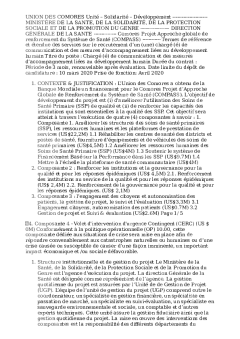A guide to prindples and practice bram f noble
lyd Q A Guide to Prindples and Practice Bram F Noble B OXFORD UNIVERSITY PRESS CContents List of Boxes Tables and Figures ix Preface Using This Guide xiii Acknowledgements xiv Part I ENVIRONMENTAL IMPACT ASSESSMENT PRINCIPLES CHAPTER Aims and Objectives of Environmental Impact Assessment Introduction De ?ning environmental impact assessment EIA substantive purposes and objectives The origins and development of EIA EIA origins EIA development International status of EIA Canada Australia European Union Japan China Developing nations and development agencies EIA process Bene ?ts of and challenges to EIA Key terms Study questions and exercises References CHAPTER A Brief Overview of Environmental Impact Assessment in Canada EIA in Canada Canadian EIA systems Provincial EIA Northern EIA Legal development of EIA EARP origins Canadian Environmental Assessment Act Towards 'higher-order' assessment EIA directions Key terms Study questions and exercises References Civ CONTENTS Part II FOUNDATIONS OF ENVIRONMENTAL IMPACT ASSESSMENT CHAPTER Nature and Classi ?cation of Environmental E ?ects Environmental change and e ?ects Order of environmental e ?ects Classi ?cation of e ?ects and impacts Nature of environmental e ?ects and impacts Temporal characteristics of e ?ects and impacts Magnitude direction Spatial extent Reversibility and irreversibility of e ?ectsand impacts Likelihood of e ?ects and impacts Key terms ? ' Study questions and exercises References CHAPTER Methods Supporting EIA Practice s Methods and techniques Methods for impact identi ?cation and classi ?cation Examination of similar projects Checklists Simple matrices ' Interaction matrices ? Networks ? Overlays and features mapping Systems models Expert judgment Methods selection Key terms Study questions and exercises References Part III ENVIRONMENTAL IMPACT ASSESSMENT PRACTICE CHAPTER Screening Procedures Screening Screening approaches Is an EIA required Towards a hybrid screening mechanism Screening requirements in Canada Requirements for EIA Type of EIA required Some general guidelines for screening Screening and the precautionary principle Key terms Study questions and exercises References CCHAPTER CHAPTER CHAPTER Scoping and Environmental Baseline Assessment EIA scoping Scoping types and functions Scoping requisites Describe the proposed activity Scope project alternatives Valued ecosystem components Establish assessment boundaries Establish the environmental baseline Identify potential impacts and issues Scoping continuation v Key terms Study questions and exercises References Predicting Environmental Impacts Impact prediction Basic requirements of impact predictions Accuracy and precision Tools for impact prediction Modelling tools Extrapolation tools Experimental tools Analogue tools Judgmental tools - Scenario tools ' 'i Spatial tools Predicting impacts on the biophysical environment What to predict Techniques Predicting impacts on the human environment What to predict Techniques Challenges to impact prediction Addressing uncertainty in impact prediction Veri ?able impact predictions Key terms Study questions and exercises References Determining Impact Signi ?cance Impact signi ?cance Determining signi ?cance E ?ect and impact characteristics Impact importance Approaches to signi ?cance determination Technical approach Collaborative aDDroach CONTENTS V Cvi CONTENTS Reasoned argumentation Composite approach Guidance for determining signi ?cance Key terms Study questions and exercises v References CHAPTER Managing Project Impacts Impact management Managing adverse impacts Avoidance Mitigation v - Recti ?cation Compensation Managing positive impacts Creating bene ?ts
Documents similaires










-
44
-
0
-
0
Licence et utilisation
Gratuit pour un usage personnel Aucune attribution requise- Détails
- Publié le Fev 25, 2022
- Catégorie Management
- Langue French
- Taille du fichier 41.7kB


